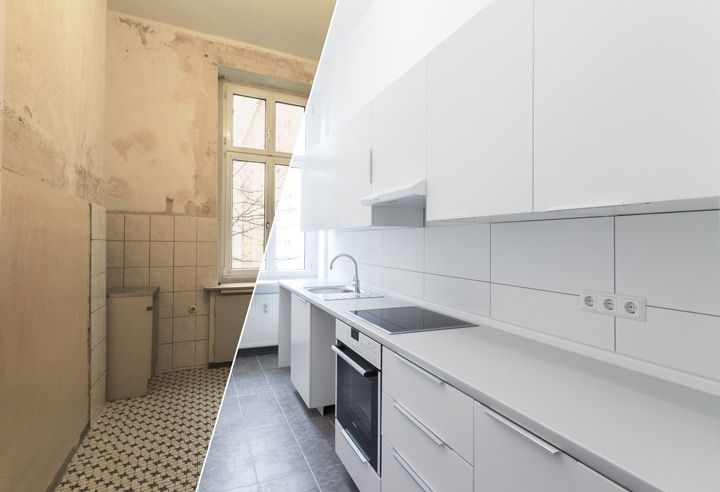
Most landlords take great pride in providing good quality homes to tenants especially with ever-increasing regulations. As a result, many investors have found that it’s more beneficial to completely refurbish properties, often before the first let, this initial investment can be substantial.
To mitigate any issues, it is important for investors to understand the tax consequences of property refurbishments so they can factor it into their financial plans effectively.
Revenue costs and capital costs
Revenue costs
Routine maintenance, such as replacing bathroom fittings, kitchen repairs, roof tile replacements, and gutter cleaning, falls under "revenue costs." These costs are deducted from rental income to determine rental profit.
Capital costs
Capital costs include expenses involved with the land and structure, plus any refurbishments that aren’t classed as maintenance repairs. You will only qualify for tax relief on capital costs when the property is sold. For example, converting a garage into a letting room is a capital cost, even if the garage roof needed repair.
Whether you're a property company or an individual owner, most investors desire costs of repairs to be classed as "revenue costs" because it qualifies you for an immediate tax deduction against rental income. Tax relief for Capital Costs could come years later if you have no current plans to sell the property.
Modern replacements
Replacing old fittings with modern equivalents, like single-glazed windows with double-glazing, is usually classified as a repair and hence, revenue cost. However, significant improvements, such as replacing an old garage with a new brick-built extension, may be considered capital costs. Taking advice from an experienced accountant with a clear understanding of the rules is essential.
Performing refurbishment works as repairs
To qualify refurbishment works as repairs, use pre-purchase survey reports to indicate the property’s potential as a rental. Provide videos and photographs of the property’s condition before and after refurbishment plus maintain detailed invoices with a breakdown of the work conducted. Using the pre-purchase report can support the argument that costs incurred after the purchase, were for general repairs, thus qualifying as revenue costs. Such evidence, including videos, photographs, and detailed invoices, is crucial for substantiating your claims.
How we help
Our property experts understand the unique challenges landlords and property investors face. We manage all your accounting needs, allowing you to focus on running and growing your business. Our services are affordable and fixed in price, ensuring peace of mind and financial predictability.
We offer a simple, user-friendly system designed for landlords of all portfolio sizes. Our comprehensive support will guide you through the complexities of property tax, saving you both time and money.
Benefits of our service
- Advice on ideal business structure
- Affordable Fixed Fees with no hidden costs
- On hand expert assistance
- Time-Saving Solutions
- Calculating all allowable deductibles to reduce your tax burden
- Strategies to profit from your business and enhance tax efficiency
- Handling all administrative tasks, including paperwork and bookkeeping
- Acting as your point of contact with tax authorities
- Ensuring accurate and timely submission of tax returns and documentation to HMRC
Get in touch
Get in touch and see how our dedicated team can benefit you today.